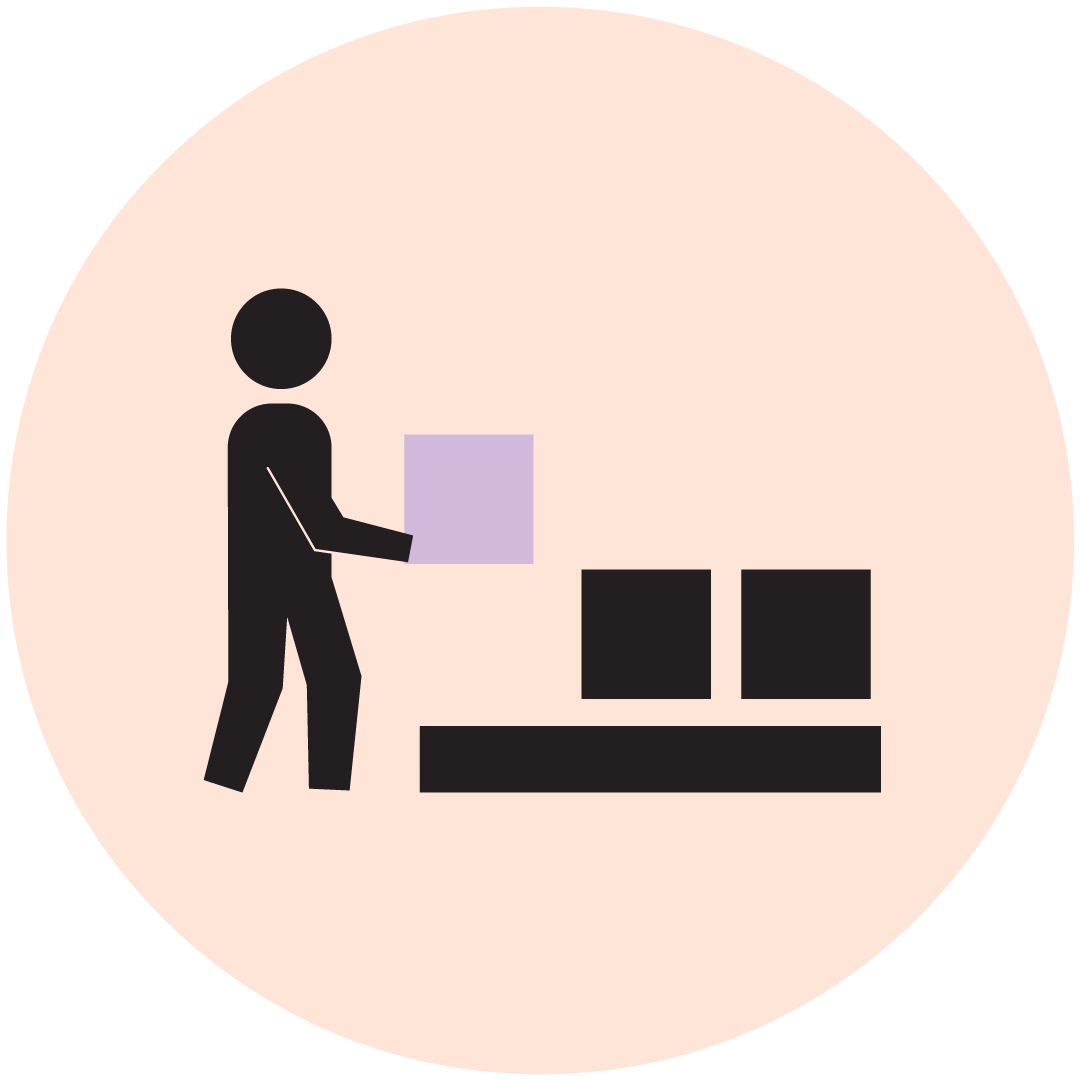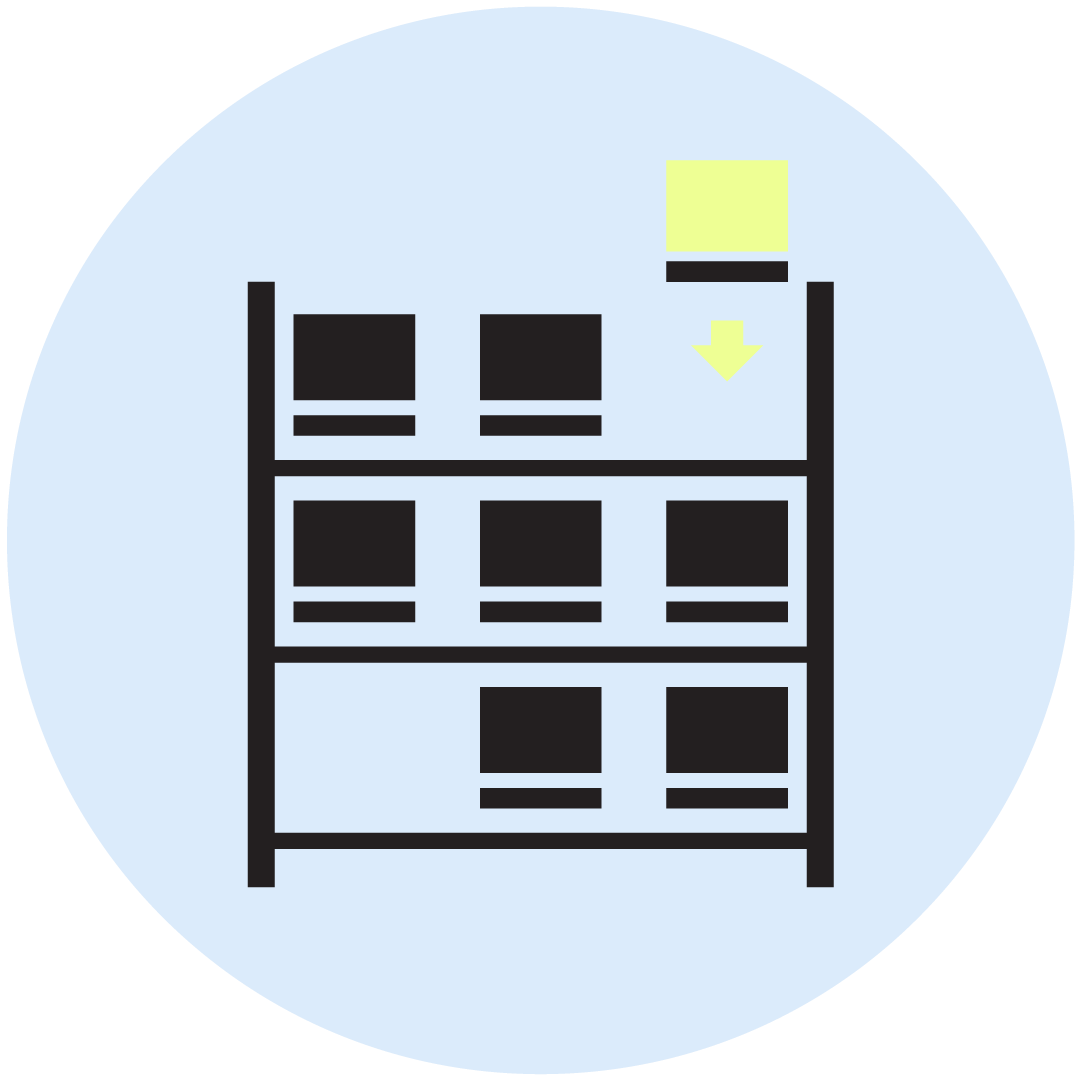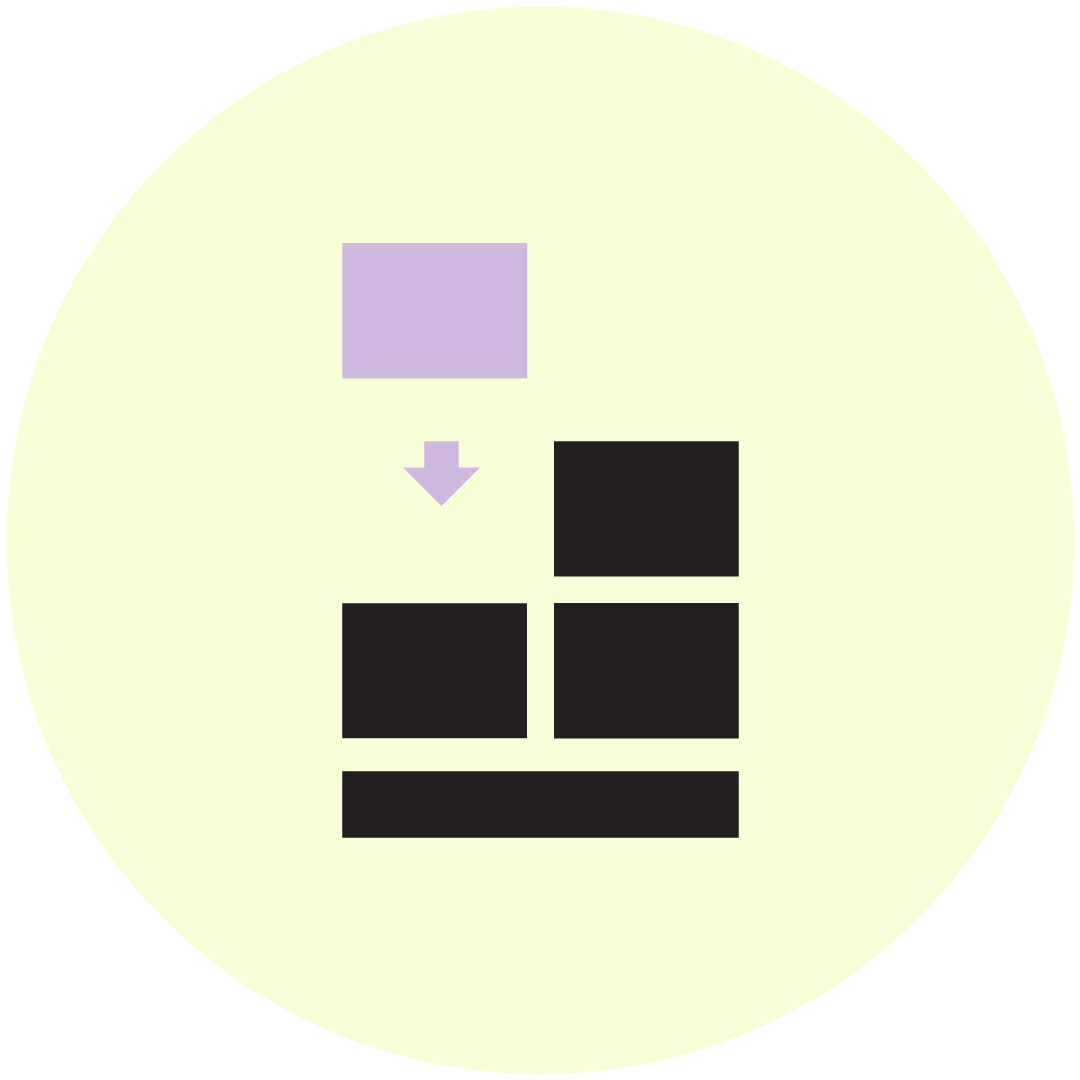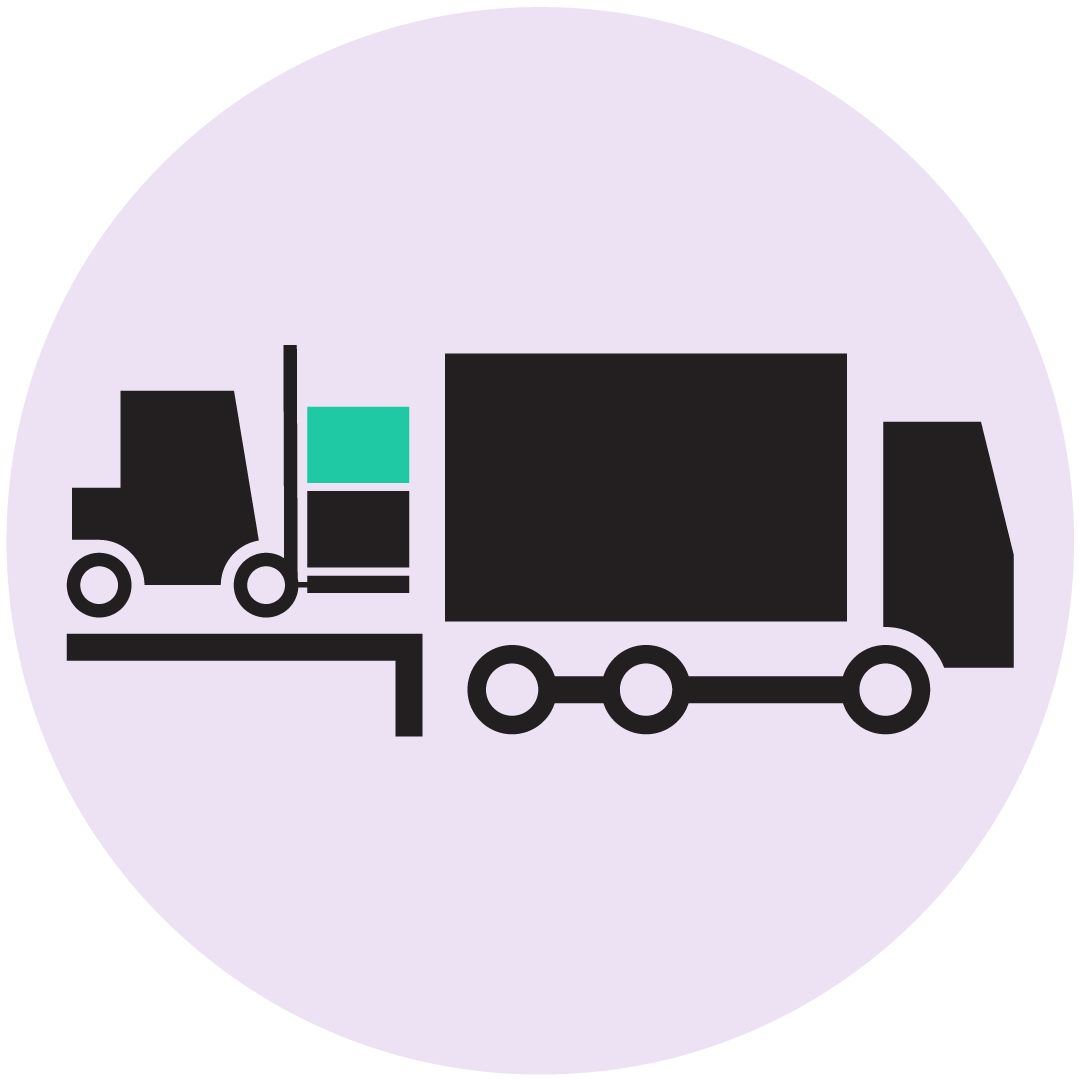Efficient warehouse processes
LOGIA WMS expert advice
Receipt
Proper goods receipt is a prerequisite for efficient and error-free warehouse processes.
Received goods are checked and the shipment is reconciled according to the purchase order in LOGIA. Deviations such as incorrect quantities and exceeded expiration dates are recorded and made visible for procurement. The master data of the goods, which is only known upon receipt (e.g., the physical dimensions and packaging of the goods), is created in LOGIA WMS.
If the goods are to be inspected before use, they must be marked “quarantined” and stored in the reception area, in a dedicated quarantine area, or in a regular warehouse location. Regardless of location, the goods are not picked for orders, even if they are included in the inventory. Only when the goods have been approved, and the quarantine mark has been lifted, will they be available for picking.
Goods are available for order picking directly from the reception area. This is an advantage when it comes to, for example, urgent orders, backorders, and cross-docking, where storing is avoided. LOGIA warehouse management system checks for inventory that needs to be delivered first due to FIFO or expiration dates.


Storage
Storage logistics ensures optimal availability and maximum use of the warehouse space.
The master data of the goods indicates how to handle the goods and where to place them in the warehouse. The specific warehouse location is determined by LOGIA WMS at the time when the move is carried out. Currently best available location is suggested based on:
- The picking place or picking area of goods
- Current inventory in the picking inventory
- FIFO principles or durability dates
- Quarantine marking
As a rule, an entire batch of goods is stored at a time, but a batch of goods with smaller items can also be handled as an optimized storage round in LOGIA. Just-in-time goods can be distributed directly to customer pallets (via reverse picking or allocation picking).
Picking
Procedures, information, and equipment support the workflow that is most suitable for achieving the capacity and quality goals of the warehouse.
LOGIA WMS manages all types of picking, such as picking for single orders, batch picking, and cross-docking.
When orders are released, picking jobs are generated in order of priority, specifying volume calculations and proposals for load carrier/packaging type. The warehouse management system optimizes the picking process and manages the picking round, picking order, and picking process itself.
As a rule, the goods are picked in the warehouse, but they can also be picked directly from the reception area and/or cross-docked. The picking round is optimized based on criteria such as end customer application, weight, fragility, and the stability of the pallet. Each pick is verified on goods and/or location number/barcode, to minimize error picks.
An efficient picking process requires the availability of goods at the picking points. The online tracking of all movements ensures the generation of automatic replenishment jobs when inventory is picked below the replenishment point. LOGIA WMS selects goods for replenishment based on the specified management principle, such as FIFO or expiration date.


Consolidation and packing
LOGIA WMS ensures that items from all sub-processes are properly collected to ensure accurate shipments to customers — with full backward and forward traceability.
Partial orders that are part of the same larger order, for example, are picked simultaneously from multiple warehouse areas and combined into one shipment. A detailed overview shows the current status of each order and, among other things, outstanding picks for the order. The high level of quality control during picking minimizes the need for final inspections that need only be carried out as random checks. When the order is complete, the shipment is packed and weighed, and labels and packing lists are printed.
LOGIA provides easy access to all data used for packaging. Information about the content of the shipment, tracking data, and so on is automatically stored in the WMS system.
Shipping
Orders are assigned space in the shipping area according to, for example, volume forecasts and loading times.
LOGIA WMS manages and reserves space/ranks for the orders in the shipping area. This is based on loading times and volume forecasts for the orders. Orders are ranked by the customer, so they can be placed according to the unload order during delivery. The dynamic space allocation process also controls the reuse of ranks throughout the day.
Freight forecasts that show the numbers of completed and expected pallets are automatically sent to the hauler. When the freight is collected, the warehouse management system controls what orders should be loaded and indicates where they are located in the shipping area. Load carrier labels are scanned as the pallets are loaded, to prevent the loading of incorrect pallets, and to ensure that no pallets are forgotten. When loading is finished, the data is used for the automatic printing of freight papers, so you avoid typing, and errors are kept to a minimum.

LOGIA’s warehouse management is designed according to industry best practices. Moreover, the system contains special functionality that has been developed over time to align with our customers' needs. This functionality can be added as needed.
Insights
Want to know more about LOGIA WMS?
Explore further by scheduling a demo through the form or by reaching out to one of our experts directly. We're here to assist you!

Contact Karsten Bangshaab

Contact Niels Have

Contact Jesper Højlund













